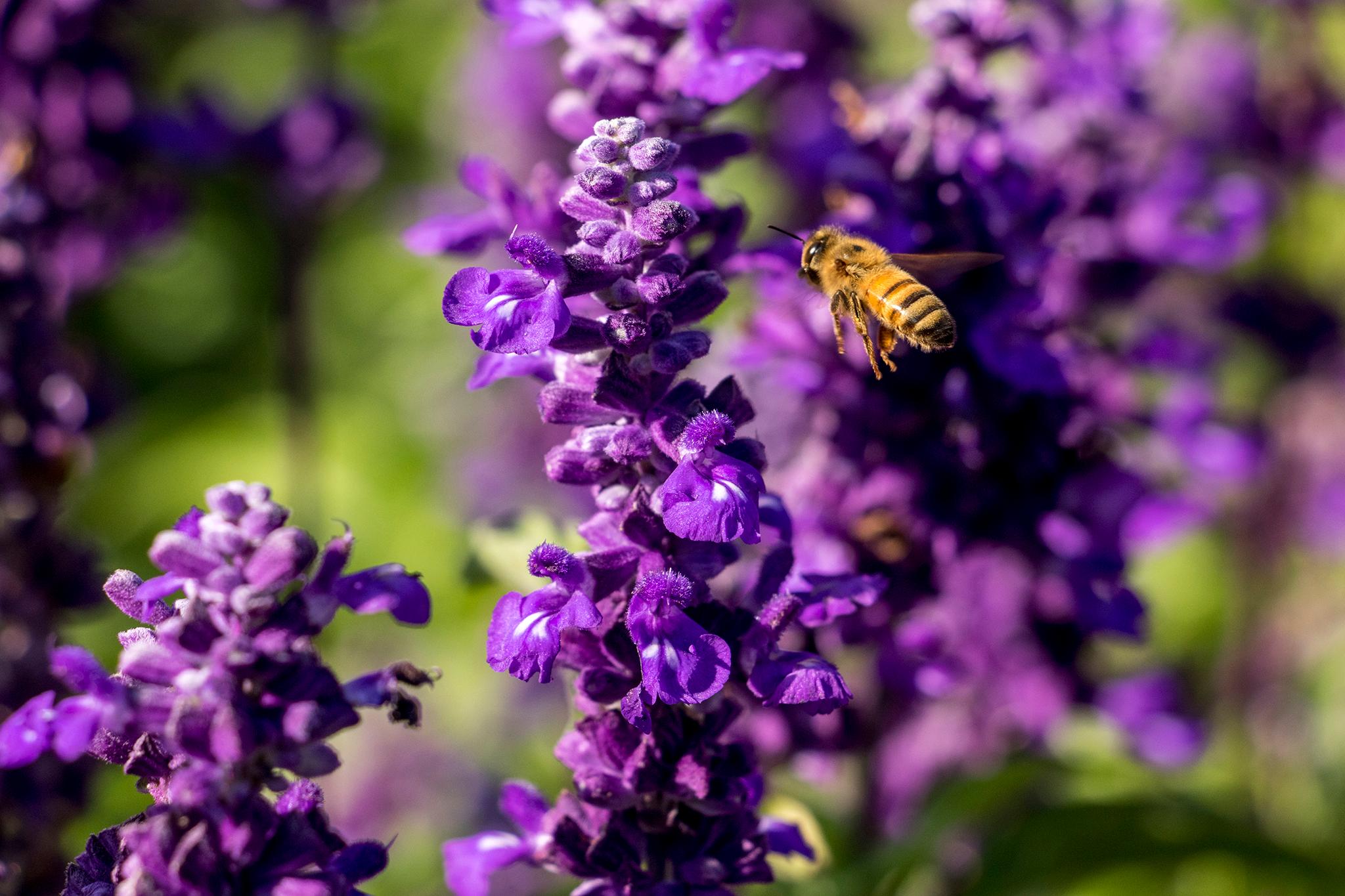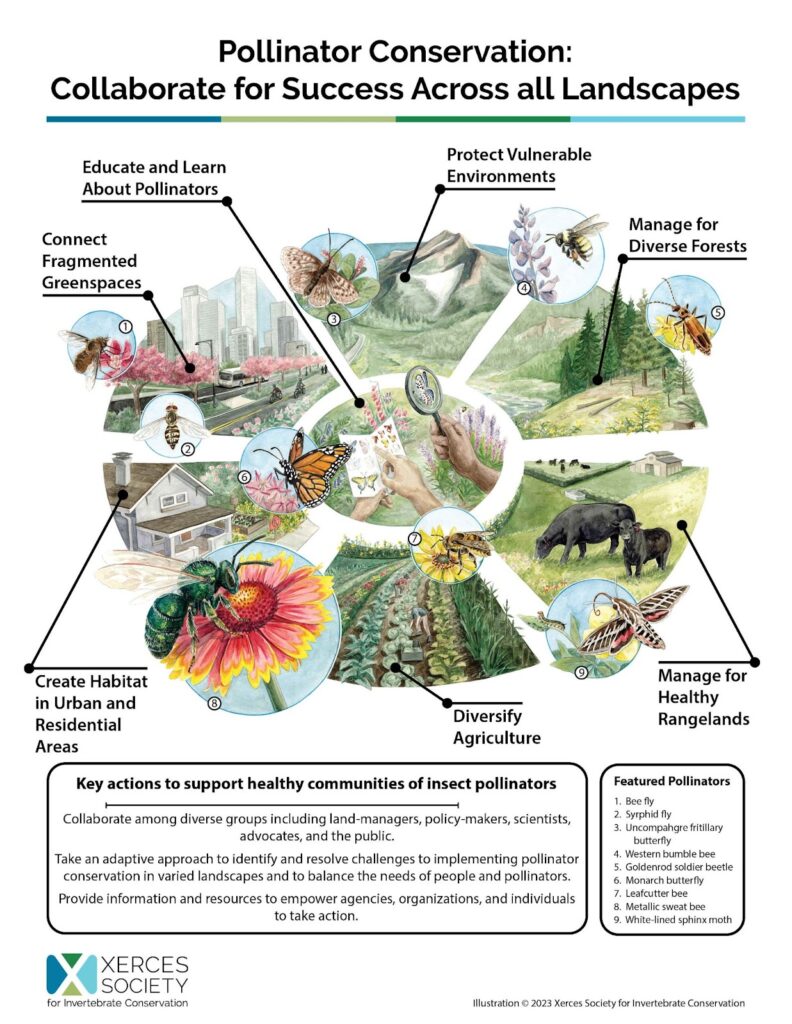
Updated at 1:45 p.m. on Monday, March 4, 2024.
A first-of-its-kind study is paving the way for how Colorado cares for its tiniest residents: pollinators. From species like the minute Metallic Green Bee to the larger White-lined Sphinx Moth, Colorado boasts one of the most diverse pollinator populations in the world.
The Colorado Native Pollinating Insects Health Study — which was the result of a huge collaboration effort between scientists, state agencies, and land managers — found that Colorado’s native insects are in trouble. The study, which was ordered by the legislature in 2022 and released earlier in 2024, is the first comprehensive report on the health and conservation status of Colorado’s native insects on a statewide level.
According to the almost 300-page report, in the last 35 years, populations of some pollinator species in the state have dropped by more than half.
“Pollinators are really crucial for entire ecosystems,” said lead scientific expert and co-author of the study, Adrian Carper. “And we of course are part of the ecosystem.”
According to Carper, there are strong connections between pollinator health and human health. In an interview with Colorado Matters senior host, Ryan Warner, Carper said the state depends on pollinators for ecosystem services like agriculture, grazing land for livestock, cleaning air and water, and maintaining open spaces.
So with so many of the state’s industries on the line; the study and its findings captured the attention of Colorado’s state legislature.

“One of the big issues around pollinator conservation is that in many states, our pollinators aren't actually considered wildlife,” Carper said. “So that means that what our state can do to help conserve them is really limited because the tools that we say apply to our birds, our deer, and our cougars don't necessarily apply to our bees and our butterflies.”
Shortly after the study was released, lawmakers proposed a bill that would give Colorado Parks and Wildlife and researchers like Carper the funding to further study and identify why pollinator populations are declining around the state. This would give Colorado Parks and Wildlife and researchers like Carper the funding to further study and identify why pollinator populations are declining around the state.
Climate change is the biggest threat to pollinator health and conservation. According to Carper, it’s because climate change exacerbates all the other threats to insects — like habitat loss due to urbanization, natural disasters, or pesticides.
Carper hopes that the legislation currently under consideration would allow the state to better understand what pollinators' conservation needs are.
“It would enable our state the ability to study, manage, and conserve both insects and the plants that they depend on.”
Editor's note: This story was updated to further clarify the purpose of a proposed bill on pollinators.









